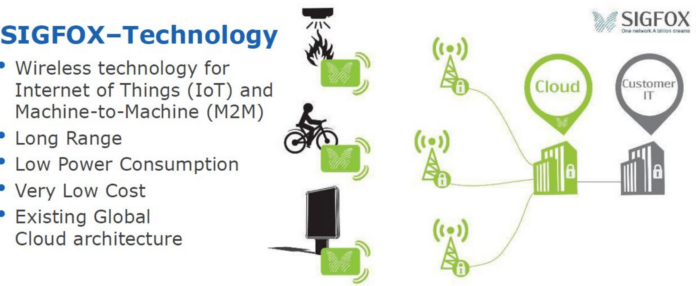Huawei and Ericsson are busy preparing to help mobile network operators roll out internet of things networks that use narrowband IoT, or NB-IoT. NB-IoT, which was part of the 3GPP’s Release 13, is not part of the LTE standard and is expected to require operators to deploy new network hardware. NB-IoT chips will operate at very low power, making them a viable alternative to dedicated low-power wide area network technologies like Sigfox and LoRa. According to analysts at Lux Research, the NB-IoT standard will capture 90% of global LPWAN connections by 2022.
NB-IoT’s cheerleaders are ignoring one important thing, according to Sigfox president Allen Proithis. Connected devices can deliver valuable insights when their data is aggregated, but each connected device is likely to be a low value item. Connectivity won’t make economic sense unless the solutions are very inexpensive. That’s where Sigfox has the competition beat, Proithis said.
Licensing fees are a cost that NB-IoT module makers will have to consider, Proithis said, adding that Ericsson will charge customers $2.50 to $5.00 in licensing fees per device. Component and manufacturing costs will have to be added to that. Meanwhile the Sigfox modules cost less than $3.00 in the United States, and less than $2.00 in Europe, he said.
“If you start with a truck chassis, you’ve still got a truck chassis at the end of the day, with all the intellectual property expenses,” Proithis said, referring to the use of cellular technology for the IoT.
“It’s great technology but it’s for connecting people, not things,” Proithis said. He sees NB-IoT as “validation from the carrier side that there is this massive market.”
It’s a market that Sigfox intends to dominate. After successfully deploying its proprietary network technology throughout France, Spain, Ireland, Portugal, Belgium and several other Western European countries, the French company has set its sights on the U.S.
“We felt it was such a strategic market we wanted to get going really quickly,” Proithis said.
The Sigfox network now covers 20% of the U.S. population, Proithis said. The cities with the most coverage are New York, Los Angeles, Chicago, San Francisco, Atlanta, Houston and Austin. While Sigfox usually partners with wireless carriers in Europe, the company is operating its own network in the U.S., striking deals with tower companies and property owners to find spots for its tiny antennas and lunchbox-sized radios.
“We do have relationships with some of the major tower providers because they’ve been doing this for a long time and they happen to have stuff in exactly the right place quite often,” said Proithis. “But the nice thing is we don’t have to develop the majority of the network with these kinds of people because their cost structure basis tends to be optimized for the traditional cellular market and for us to fulfill our value proposition we need the flexibility to really deploy on a variety of sites,” he said.

